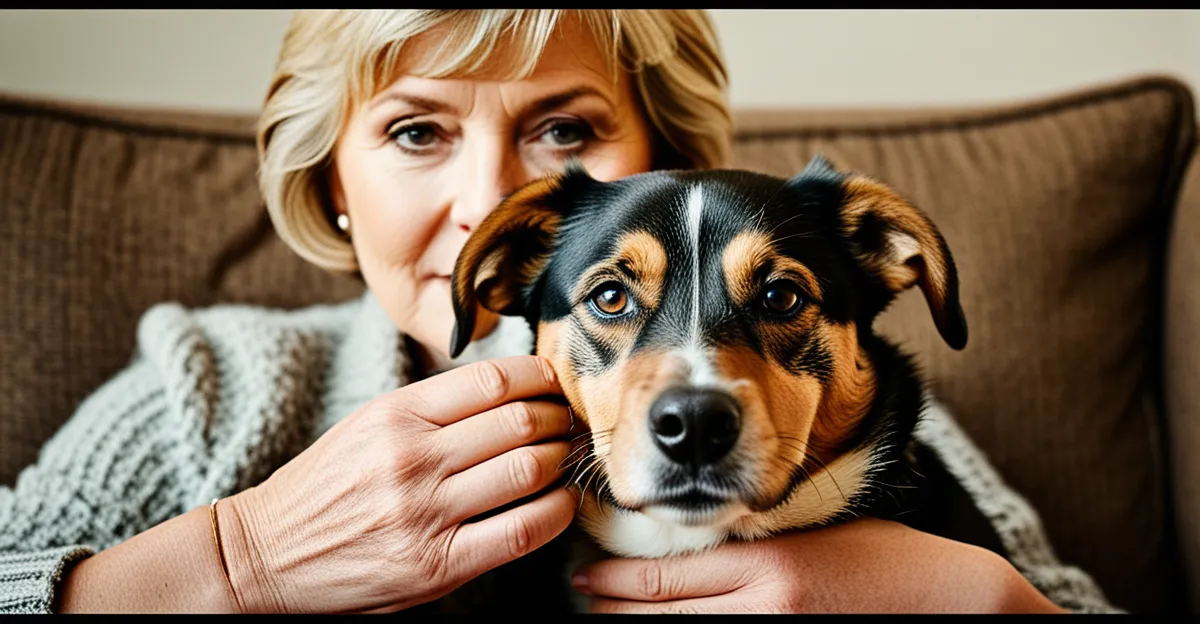Historical Overview of Pet Adoption in the UK
Pet adoption in the UK has undergone significant changes from the 1970s to the present, reflecting wider sociocultural movements and legislative milestones. Initially, the 1970s saw modest pet adoption levels, driven mostly by family dynamics and the perception of pets as companions. This era set the groundwork for future pet ownership trends in the UK.
As we moved into the 1980s and 1990s, growing awareness of animal welfare led to more structured adoption practices. Key pet rights legislation emerged, advocating for better treatment and care, shaping societal attitudes and increasing adoption rates. The 2000s and 2010s saw the rise of pets being recognized as integral family members, heavily impacting adoption trends and preferences.
Also read : How Can Pet Ownership Impact Your Daily Routine in the UK?
Several sociocultural factors have played pivotal roles each decade, influencing why and how people adopt pets. From media influence to changing lifestyle patterns, these aspects have continuously reshaped pet adoption history. By understanding these trends, we can appreciate the evolving bond between humans and their pets in the UK.
Public Attitudes Toward Pet Adoption
Understanding public perceptions of pets as valued family members has evolved significantly over the decades. This shift is largely due to the influence of media and celebrity endorsements, where more households have come to cherish their pets beyond mere ownership. Celebrities frequently spotlight rescue animals on social media, encouraging fans to consider adopting.
In the same genre : How Do Pets Improve Emotional Well-Being in the UK?
Awareness campaigns have played a crucial role in altering societal viewpoints. By highlighting the benefits of adopting rescue animals—such as giving homeless pets a second chance—these initiatives help foster a sense of empathy and responsibility. Campaigns like “Rescue Me” illustrate how rescue adoptions can be rewarding for both the pet and the adopter, leading to increased adoption rates.
Media and pet-focused organizations have continually pushed these narratives, resulting in more positive public attitudes toward pet adoption. The heightened visibility of adoption stories contributes to a cultural appreciation for rescued pets, ultimately shifting the public mindset from seeing pets as property to treasured companions.
Socioeconomic Factors Influencing Pet Adoption
Understanding the socioeconomic impact on pet ownership is key to comprehending fluctuating pet adoption rates. Economic factors in pet adoption play a pivotal role, especially during financial downturns. During such times, many households encounter reduced disposable income, influencing decisions related to adopting or maintaining pets within a budget constraint. This can lead to lower adoption rates as individuals prioritize financial security over new pet responsibilities.
Urbanization also shapes pet ownership preferences profoundly. As more people reside in cities, space constraints and lifestyle changes often lead to a preference for smaller pets or alternative pet solutions, such as fostering rather than full adoption. This shift reflects not just changing physical environments but also evolving lifestyles that prioritize flexibility, impacting long-term pet ownership trends.
Additionally, the role of disposable income cannot be overstated. As pet care costs such as food, healthcare, and accessories rise, the decision to adopt a pet increasingly hinges on a household’s financial capacity. This dynamic underscores how economic factors significantly steer pet adoption patterns. By addressing these income-related barriers, there’s potential to implement strategies that support sustainable pet ownership even in challenging economic climates.
Statistical Trends in Pet Adoption
Understanding pet adoption statistics provides invaluable insight into the evolving landscape of UK pet ownership. From the 1970s onward, there has been an observable fluctuation in adoption rates, reflecting societal changes. In the early days, fewer households adopted pets, primarily seen as companions rather than integral family members.
Key Adoption Statistics
Examining adoption rates over the decades reveals a steady increase, peaking during the 2000s when pets increasingly become viewed as family members. Recent data indicates a stabilization of these rates, with notable spikes during economic downturns, where people opted for more affordable companionship.
Demographic and Regional Insights
A closer look at UK adoption data analysis shows higher adoption rates among women, particularly those aged 25 to 34. This demographic aligns with the growing trend of solo living and the desire for companionship. Regionally, urban areas like London demonstrate varied adoption practices. In these locales, factors like living space and pet compatibility with city life significantly influence adoption choices.
Continued Monitoring and Analysis
Maintaining and analyzing these statistics is crucial for recognizing and addressing emerging trends. By staying informed, stakeholders can tailor strategies to encourage responsible pet ownership across different demographics, ensuring both pets and owners benefit from their shared companionship.
Case Studies of Successful Pet Adoption Initiatives
Examining successful pet adoption campaigns reveals key strategies that have effectively encouraged pet adoption. One of the most well-known campaigns is “Adopt, Don’t Shop,” which advocates for adopting pets from shelters rather than purchasing from breeders or pet stores. This campaign highlights the plight of homeless animals and encourages the public to opt for a more ethical approach in acquiring pets.
Innovative Government Initiatives
Local governments across the UK have also played a significant role in promoting pet adoption. By implementing initiatives such as subsidized pet care programs and public adoption events, they have managed to increase awareness and interest in pet adoption. These efforts demonstrate a commitment to improving community involvement in animal welfare and emphasize the importance of adopting over buying.
Insights from Charities
Charities and non-profit organizations are at the forefront of successful adoption stories. With programs that focus on educating potential adopters and providing resources for new pet parents, these organizations have made a positive impact. For example, campaigns that showcase heartwarming stories of rescued pets finding loving homes help to change public perception and encourage more people to consider adoption. This approach not only aids in finding homes for pets in need but also strengthens the human-animal bond.
Overall, these case studies underscore the effectiveness of collaborative efforts between governmental bodies, charities, and media in promoting the welfare and adoption of pets. Sustained emphasis on ethical adoption practices continues to shape the future of pet ownership, ensuring pets are seen as cherished family members.
Expert Opinions on Future Pet Adoption Trends
Exploring the future of pet adoption trends provides valuable insights into the evolving nature of pet ownership. Experts across the veterinary and pet industry sectors offer predictions that can guide enthusiasts and policymakers alike in their approach to pet adoption.
Expert Insights on Evolving Adoption Models
Veterinarians and industry specialists emphasize the shift towards fostering as a viable alternative to traditional pet adoption. This model allows potential pet owners to experience the responsibilities and joys of pet care without a long-term commitment. Such flexibility could appeal to urban dwellers and those with uncertain lifestyles, leading to an increase in fostering programs nationwide.
Technology’s Influence on Adoption Rates
Technological advancements are anticipated to revolutionize how pets are adopted. Online platforms and mobile apps streamline the adoption process, making it more accessible. These tools enable prospective owners to view available pets virtually, offering comprehensive details about each animal’s history and needs. By enhancing accessibility, technology supports increased adoption rates and encourages informed decision-making.
Predictions for Future Pet Ownership
Experts speculate that pet adoption trends will continue to evolve, with an emphasis on holistic pet care. There’s a growing demand for pets as emotional support companions, especially among younger demographics. This trend reflects deeper societal needs for mental wellness and community, further integrating animals into the core fabric of family life.
By anticipating these developments, stakeholders can adapt strategies to align with emerging pet ownership preferences. As pet adoption continues to gain prominence, both fostering models and technological advances promise to reshape the landscape of how we welcome pets into our homes.
Recommendations for Future Pet Adoption Strategies
In shaping effective future strategies for pet adoption, we must address several key areas that promote and improve adoption processes for both shelters and rescues. A significant area of focus is streamlining the adoption process to make it more accessible and less time-consuming. This involves investing in digital platforms and online systems that can facilitate seamless interactions between potential adopters and shelter staff. These tools not only cut down waiting times but also ensure that adopters can get comprehensive profiles of pets available for adoption.
Community involvement plays a vital role in encouraging responsible pet ownership. Community-based events, such as adoption fairs and workshops, provide opportunities to educate the public about the benefits of pet adoption. These events create awareness and also foster connections between adopters, pets, and the community, paving the way for a more empathetic approach to pet welfare.
Social media stands as a powerful ally in extending the reach of pet adoption campaigns. By harnessing platforms such as Instagram and Facebook, shelters can showcase heartwarming stories of adopted animals, promote adoption events, and engage with a larger audience. This visibility is crucial for altering public mindsets and reducing the stigma attached to rescue pets. In a world increasingly influenced by digital media, crafting narratives that appeal emotionally to users can transform how adoption processes are perceived and significantly enhance adoption rates.
Ultimately, these strategies hinge on a collaborative effort among shelters, the community, and media to reshape the narrative around pet adoption, ensuring that every pet finds a loving home.








